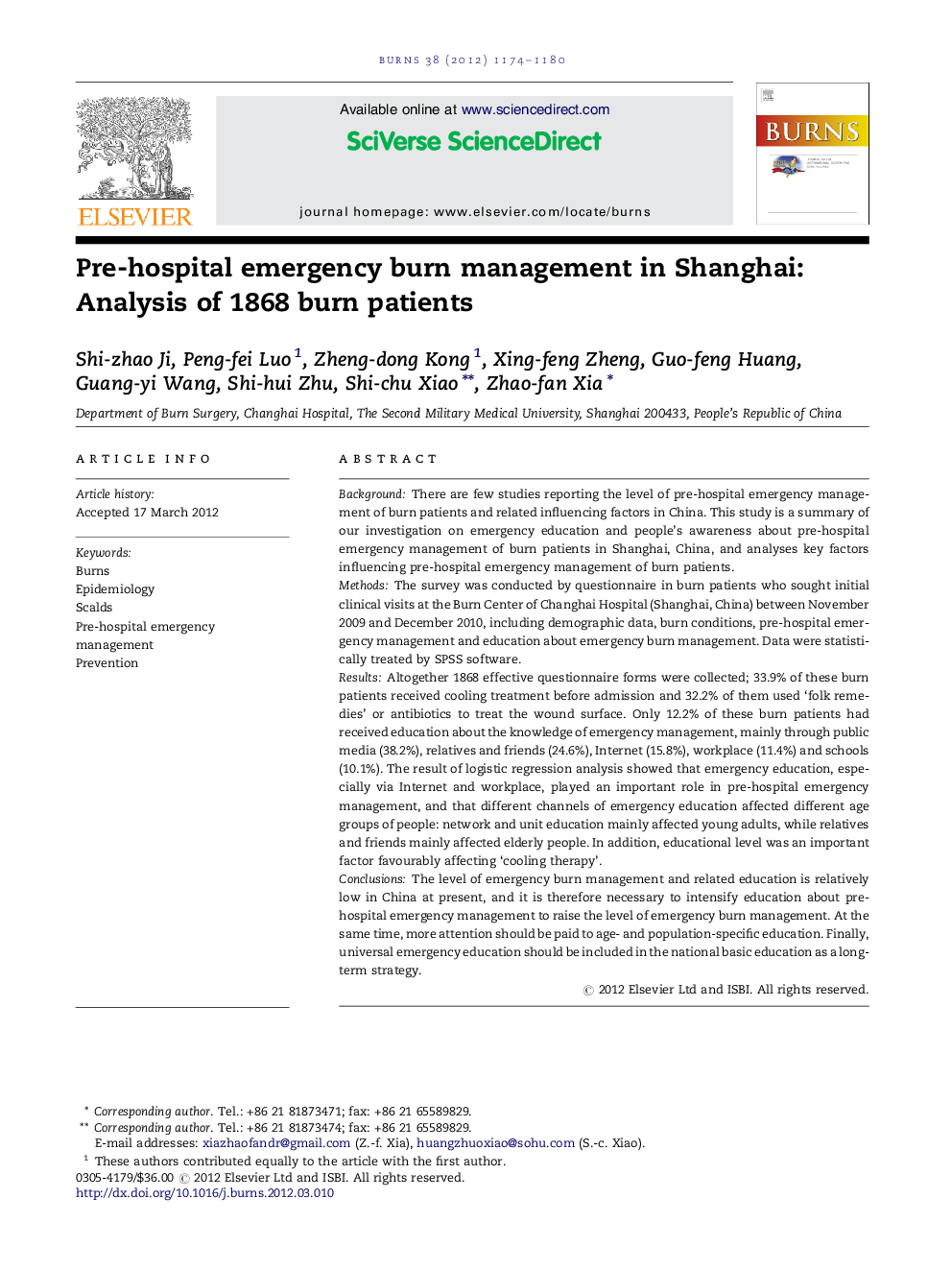| Article ID | Journal | Published Year | Pages | File Type |
|---|---|---|---|---|
| 3105167 | Burns | 2012 | 7 Pages |
BackgroundThere are few studies reporting the level of pre-hospital emergency management of burn patients and related influencing factors in China. This study is a summary of our investigation on emergency education and people's awareness about pre-hospital emergency management of burn patients in Shanghai, China, and analyses key factors influencing pre-hospital emergency management of burn patients.MethodsThe survey was conducted by questionnaire in burn patients who sought initial clinical visits at the Burn Center of Changhai Hospital (Shanghai, China) between November 2009 and December 2010, including demographic data, burn conditions, pre-hospital emergency management and education about emergency burn management. Data were statistically treated by SPSS software.ResultsAltogether 1868 effective questionnaire forms were collected; 33.9% of these burn patients received cooling treatment before admission and 32.2% of them used ‘folk remedies’ or antibiotics to treat the wound surface. Only 12.2% of these burn patients had received education about the knowledge of emergency management, mainly through public media (38.2%), relatives and friends (24.6%), Internet (15.8%), workplace (11.4%) and schools (10.1%). The result of logistic regression analysis showed that emergency education, especially via Internet and workplace, played an important role in pre-hospital emergency management, and that different channels of emergency education affected different age groups of people: network and unit education mainly affected young adults, while relatives and friends mainly affected elderly people. In addition, educational level was an important factor favourably affecting ‘cooling therapy’.ConclusionsThe level of emergency burn management and related education is relatively low in China at present, and it is therefore necessary to intensify education about pre-hospital emergency management to raise the level of emergency burn management. At the same time, more attention should be paid to age- and population-specific education. Finally, universal emergency education should be included in the national basic education as a long-term strategy.
